Colonel Colin Mackenzie who is a first Surveyor general of British East India company who extensively studies historical manuscripts, numismatics, Kaifiyath[s] of South India especially the Mysore kingdom and Madras state.

We Kannadigas always delight to these English men’s who extensively worked to illustrated India’s rich history, language, manuscripts, inscriptions , literature and more.
- Benjamin Lewis Rice (Archaeologist, Compiled Mysore Gazetteer)
- Col Colin Mackenzie
- Ferdinand kittel (Indologist,Kannada literature)
Col Colin Mackenzie was a Scottish army officer in East India Company and became the Surveyor General of India and he produced the first authentic geographical map of South India¹
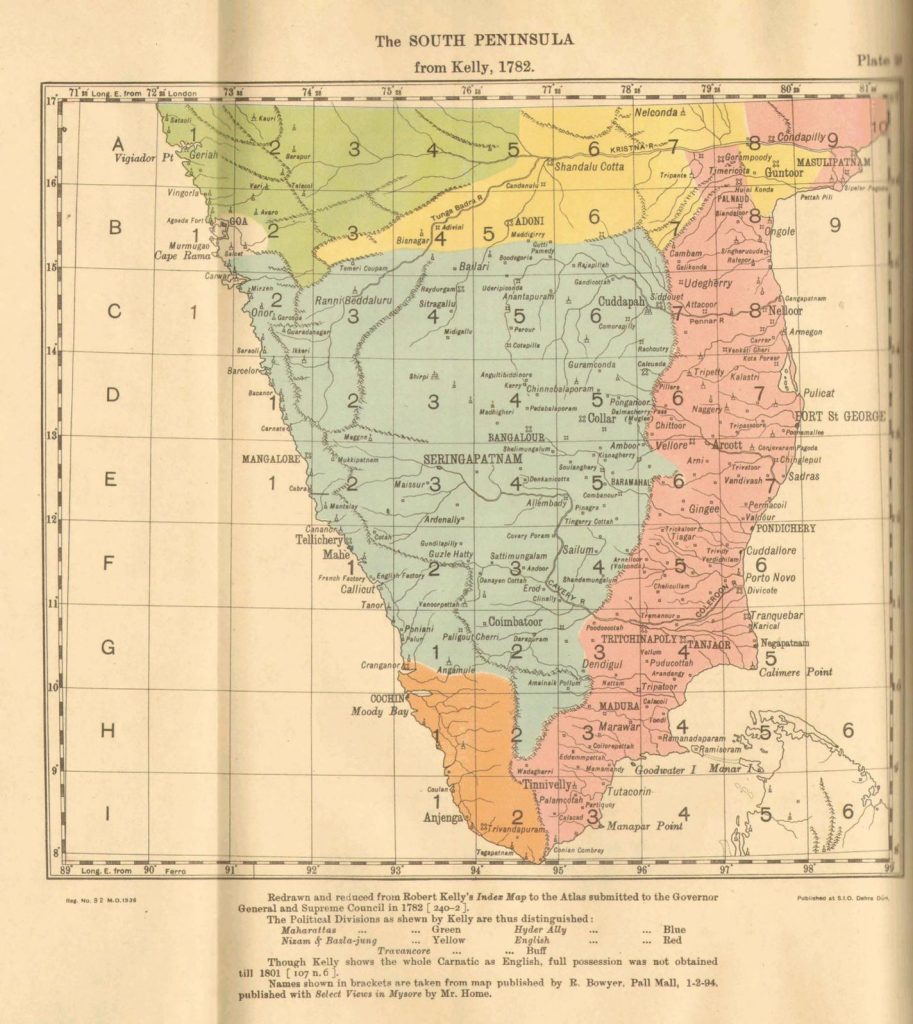
He was born in Stornoway, on the island of Lewis in northern Scotland (UK) in 1754 after his education he joined to East India Company as a Military engineer and even camped against Tippu sultan during Third Anglo-Mysore war.
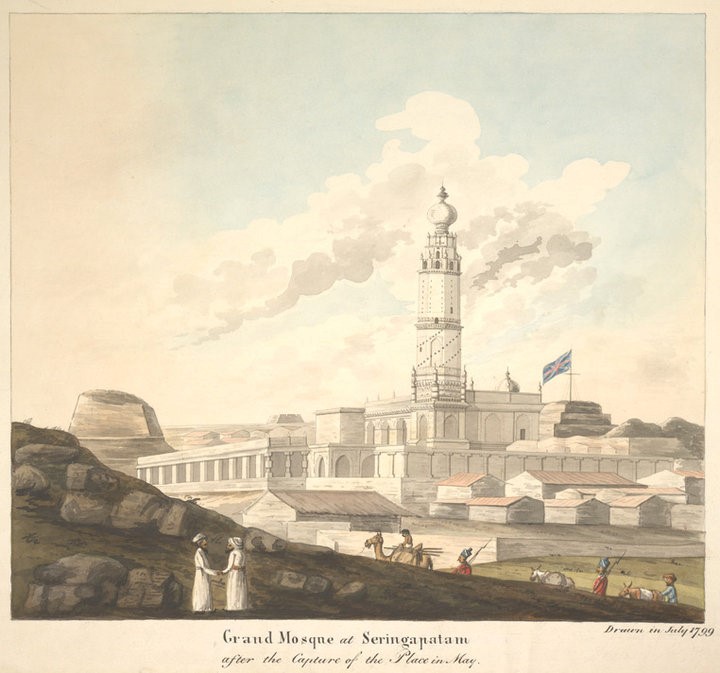
After Tippu’s defeat in 1799, Mackenzie’s was asked to survey Mysore territories in the year 1800. This permitted him to have large interpreters, draftsmen, illustrators through whom he collected a heap of information on natural history through the kaifiyat[s] geography, History, social customs, and folk tales in Mysore and Rayalaseema region.
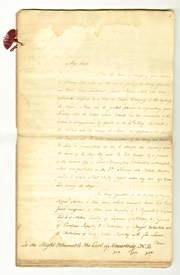
From the Colin Mackenzie’s collected kaifiyat[s] traced back to my ancestor’s root to 15th Century AD and my forefathers are Guru’s(Pandit) to the local chieftains, they granted a 15 acres of land as mentioned in one of kaifiyat[s] note and still the land owned by one of my relative².
As Col Colin Mackenzie is a Scottish officer and he searched for interpreters who can read the manuscripts, land grants, genealogical narratives who experts in south Indian languages with Sanskrit, Persian language from the local sources by the help of Mark Wilks, a friend of Colin Mackenzie by providing assistants Kavali brothers a Pandiths (Kavali Venkata Boriah and Kavali Lakshmiah) they are versatile interpreters who knew Tamil, Kannada, Telugu, and Sanskritᶟ.
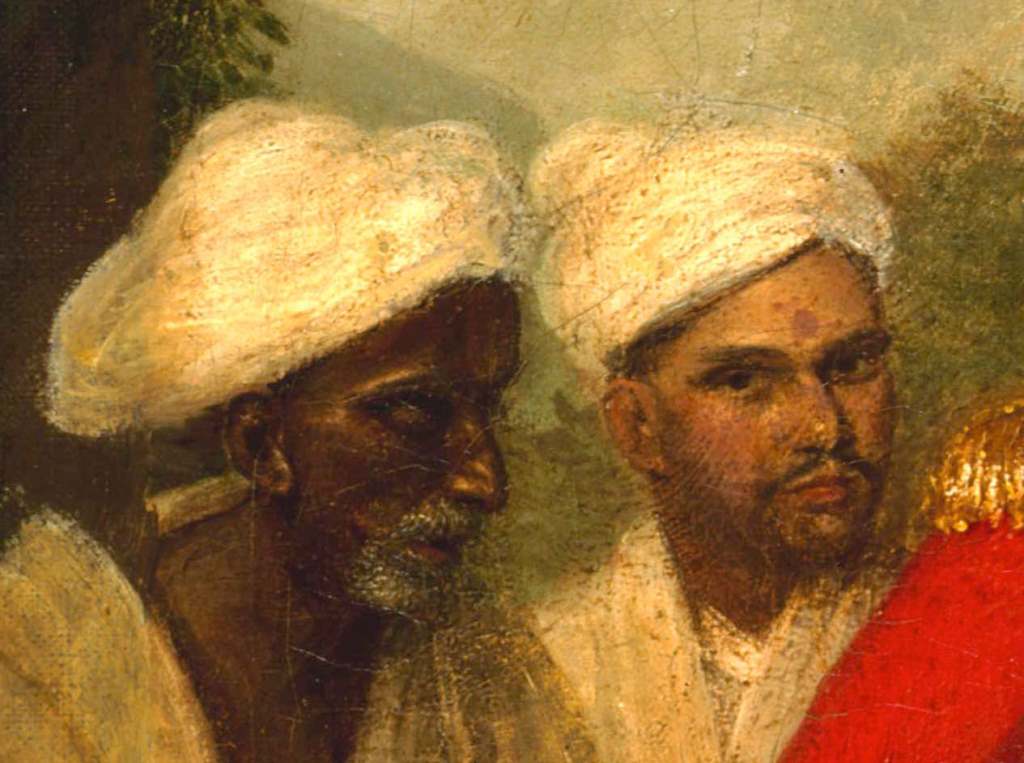
And another renowned assistant was Melur Dharmiah, an expert in reading the Old Kannada (Halegannada). There were also other interpreters who he liberally patronized.
The collections’s of Col Colin Mackenzie’s from his unpublished English document:

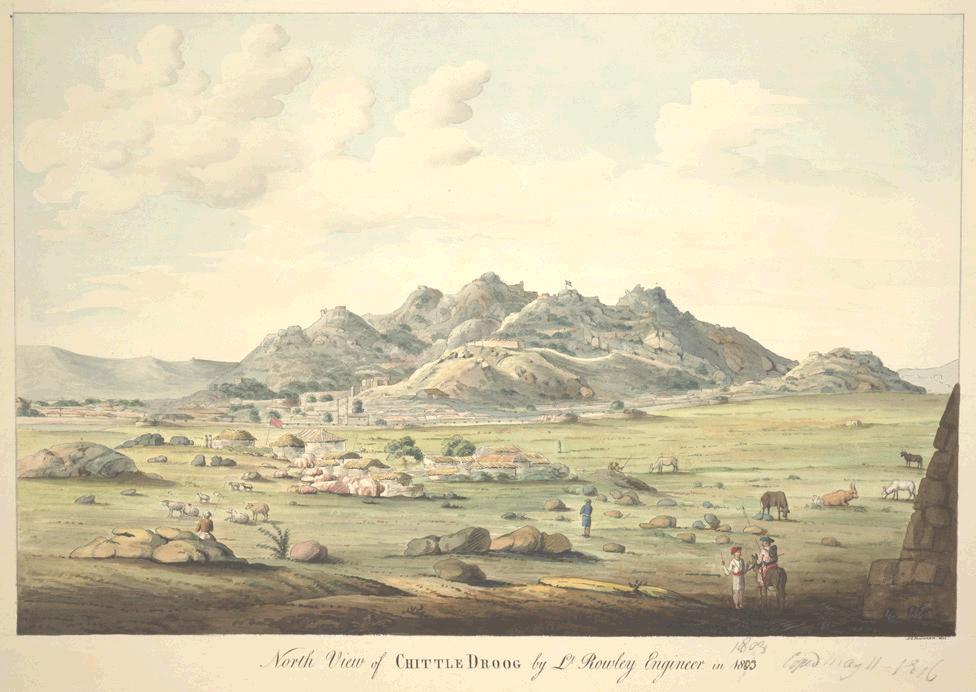
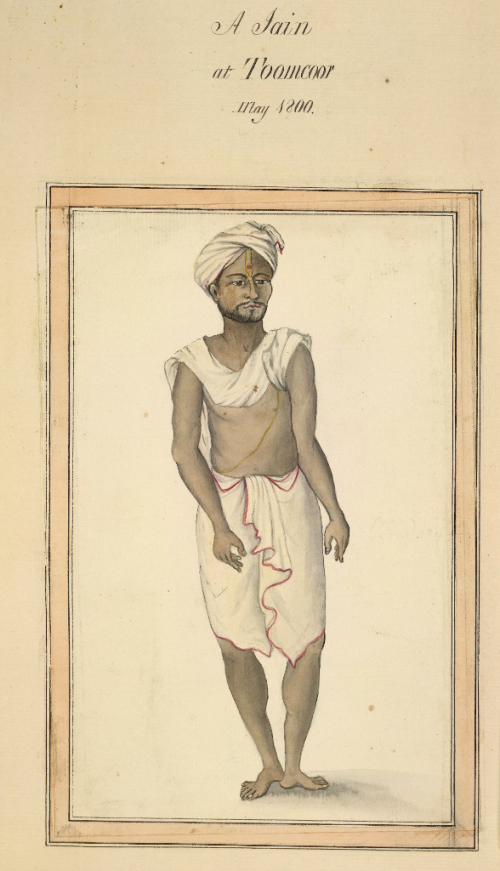
1 
2
1.A jain at Toomkoor (Present Tumkur), 1800 AD (Source: Comprehensive study of Pagonde poligars by Dr Yogeesh)
2. A Sepoy at Chitalladroog(Present Chitradurga),1800 (Source: Comprehensive study of Pagonde poligars by Dr Yogeesh)
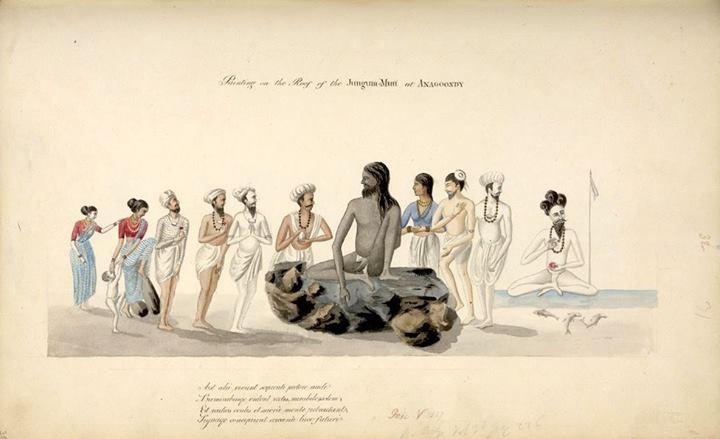
Pen-and-ink and water-colour drawing date January 1801, of a guru surrounded by devotees painted on the ceiling of the Uchappaya Matha at Anegondi in Karnataka, from an album of 56 sheets of drawings (60 folios) mainly of miscellaneous architecture and sculpture in the Deccan and S. India. ff.31-38 depict ceiling paintings at Anegundi, dated 1793-1806. Some drawings are by MacKenzie himself, others by his draftsmen, including C. Ignatio.
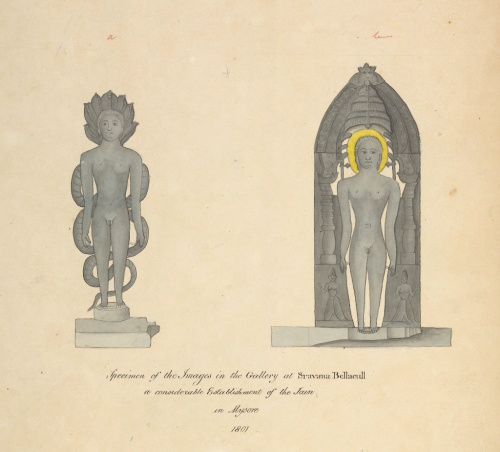
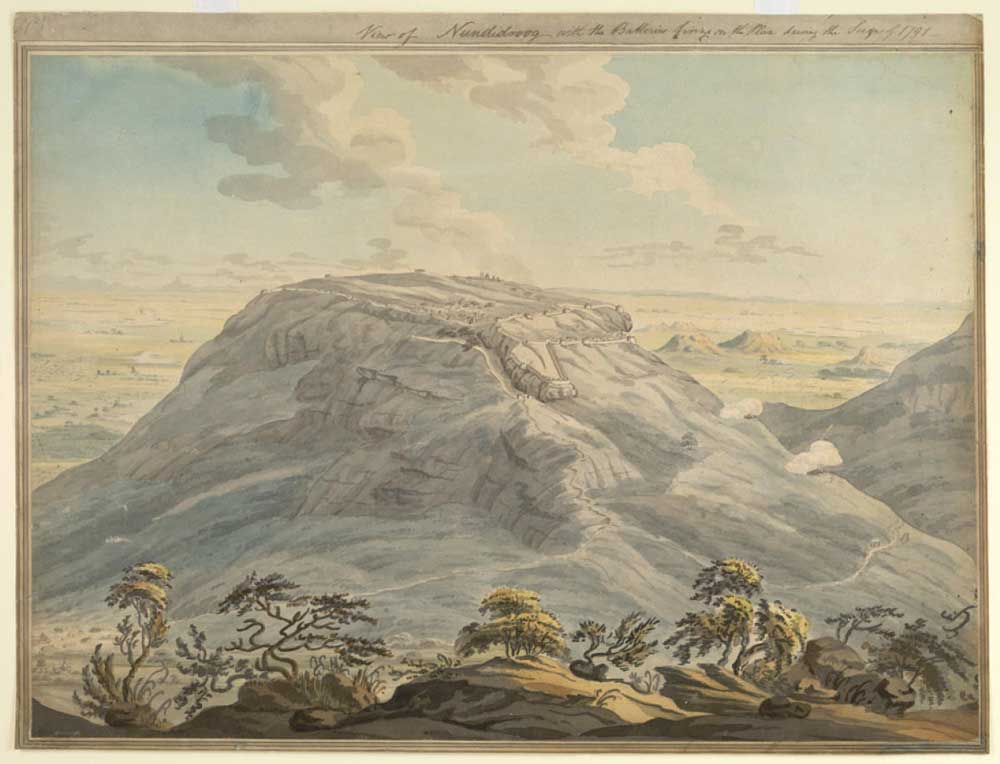
Mackenzie died in Calcutta (Present Kolkatta) on 8th May 1821 without returning to his birthplace even once and still lies in South park street cemetery. The Government purchased his entire collections of Coins, Inscriptions , Kaifiyat[s],Oriental history from his widow, Petronella offered the collections to the Bengal Government at a tentative price of Rs 1 lakh reasonable price⁴.

A passage grant by Colin to his assistants(Kavali brother’s)
A passage from Colin Mackenzie’s will saying that kavali lakshmiah and his younger brother Kavali Ramaswami should receive a tenth of his estate⁵
Much of his collection of documents, Palm leaf manuscripts, artifacts, and artworks are now in the British Museum and the Oriental and India Office Collections of the British Library, though part of it remains in the Government Museum in Madras. Keen interested to visit his birthplace, museum to access more information on him.
His widow remarried to a company officer, Robert Fulcher in 1823 and settled in England. Colin Mackenzie had a sister Mary Mackenzie and she built a mausoleum in Stornoway, mary herself also buried and memorialized here⁶.
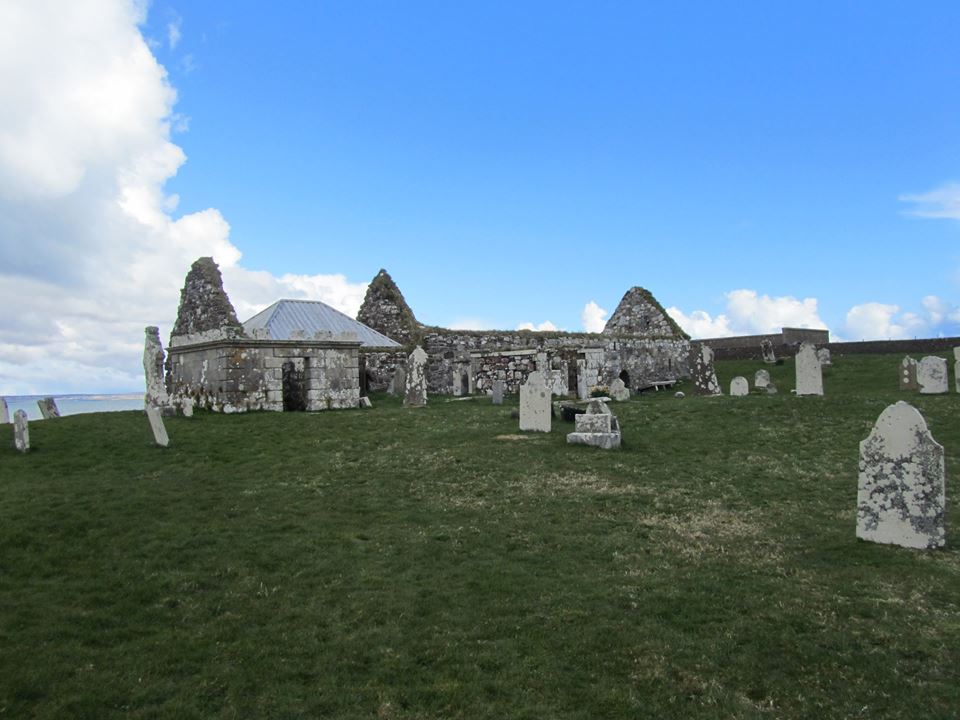
Mary was proud of her brother Colin’s achievements in India, and highlighted his ‘eminently distinguished’ career, ‘high professional talents’ and especially emphasized his ‘indefatigable researches into the ancient history, literature and antiquities of that interesting part of the globe by which he has furnished to the world a mass of valuable information far surpassing the ordinary efforts of human industry and in which arduous pursuit his useful life terminated at Calcutta⁷
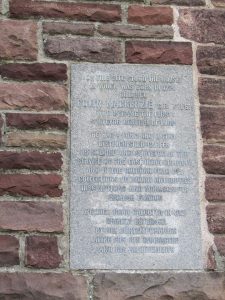
Inscription details:
On this site stood the house
in which was born in 1754
Colonel
Colin Mackenzie C.B. F.R.S.
who became the first
Surveyor General of India
He had a long and highly
distinguished career
as soldier and surveyor in the
service of the East India Company
and in the cultural field his
collections of Indian antiquities
inscriptions and manuscripts
became famous
He died near Calcutta in 1821
greatly esteemed
by his contemporaries
alike for his character
and his achievements
It’s necessary to recall the achievement of this extraordinary person who fetched the un-detailed manuscripts, Kaifiyat[s], data from the old inscription to a document that we are made a baseline for the history.
He was not like other officers to join the East India Company, make easy money by means fair or foul, and return home to live in comfort or participate in politics on the security of the fortune made in India. That a few of the Company’s servants did not tread this golden path to fortune, but chose on their own, prompted by the love of learning, ‘to discover the east’ for the benefit of…the east itself was a lucky accident of great historical value
– Shiva Kumar Mutt
References:
1. Howes, Jennifer (2010). Illustrating India: The Early Colonial Investigations of Colin Mackenzie (1784–1821). New Delhi: Oxford University Press
2. Mackenzie unpublished English document (1801)
3. Howes, Jennifer (2010). Illustrating India: The Early Colonial Investigations of Colin Mackenzie (1784–1821). New Delhi: Oxford University Press
4. Howes, Jennifer (2010). Illustrating India: The Early Colonial Investigations of Colin Mackenzie (1784–1821). New Delhi: Oxford University Press
5. ((IOR/L/AG/34/29/33, folio 249))
6. https://thewonderhouse.co.uk/col-colin-mackenzie-1754-1821-travels-to-stornoway-isle-of-lewis-part-2 by Ms Sushma Jansari
7. https://thewonderhouse.co.uk/col-colin-mackenzie-1754-1821-travels-to-stornoway-isle-of-lewis-part-2 by Ms Sushma Jansari
Further reading:
· Mackenzie, W. C. (1952) Colonel Colin Mackenzie, first Surveyor-General of India. Edinburgh: W&R Chambers.
· Wolffhardt, Tobias (2010) Wissensproduktion als Staatsaufgabe Colin Mackenzie (ca. 1753-1821) und das Projekt eines umfassenden Survey in Indien. Ph. D. Dissertation. Ludwig-Maximillian’s-Universität, München. (in German)
